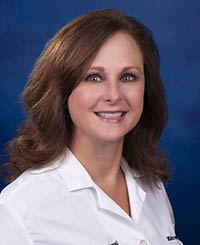Stroke Awareness and Prevention: Acting FAST Saves Lives
- Category: Neurosciences, Heart & Vascular Care
- Posted On:

More than 795,000 people in the U.S. suffer a stroke each year. While much effort has been invested in stroke awareness and prevention, it remains the fifth leading cause of death.
Maureen Moore, RN, stroke coordinator, Southwest General, explains the different types of stroke, symptoms to look out for, and why acting fast is critical for preventing disability from stroke—or worse, death.
What Causes a Stroke?
Stroke occurs when blood flow is interrupted to or within an area of the brain. The most common type of stroke, which accounts for more than 80 percent of all strokes, is ischemic stroke. It is triggered when blood clots or fatty deposits block blood vessels that supply blood to the brain. “These blockages can form in or near the brain, where the clot then breaks off and travels to the brain,” states Moore.
The second type of stroke is hemorrhagic stroke, which occurs when a blood vessel inside the brain ruptures due to an aneurysm or a longstanding history of high blood pressure.
Identifying Symptoms of Stroke
Symptoms of stroke are fairly consistent across the board, but Moore cautions they don’t all necessarily accompany every stroke. “You might have one symptom, you might have several of them. But you don't want to make those judgments. If you develop these symptoms, you really just want to try to come in to the Emergency Room (ER) as quickly as possible, preferably by calling 9-1-1.”
An easy way to remember which symptoms to identify is by using “BE FAST.”
- B=Balance: Feeling wobbly or off-balance
- E=Eyes: Double vision, blurry vision, or loss of vision
- F=Face: Facial drooping or an asymmetrical appearance of the face
- A=Arm: Weakness in the arm or asymmetry when holding arms out like Superman
- S=Speech: Difficult speech, slurred speech, using the “wrong” words, or inability to express what one wants to say
- T=Time: Critical quick response. The faster stroke can be addressed, the better the outcome will be.
Even if someone second-guesses their symptoms, Moore urges them to act immediately.
“There are other things that mimic strokes. Instead of overthinking it, let us figure that out at the hospital, even if your symptoms go away. If you're with someone who is experiencing symptoms, don't take ‘no’ for an answer. Understand that most people don't really want to think that is what's happening. They're probably going to minimize their symptoms. But, if that is what's really happening, you don't want to be wrong about this,” she warns.
Stroke Risk Factors
While some risk factors cannot be modified with lifestyle changes (i.e. genetics, ethnicity, previous stroke occurrence, etc.), there are many steps individuals can take to mitigate risk. For example, the single most important risk factor for stroke is high blood pressure.
“It is important to continue taking your medication, and to do everything you can to try to control your blood pressure,” implores Moore.
Additional risk factors include smoking, drug or alcohol abuse, uncontrolled diabetes, high cholesterol, obesity and a sedentary lifestyle. One factor that individuals may not be aware of is atrial fibrillation (AFib), which is essentially an irregular heartbeat.
“A lot of people don't know they have AFib, which is another important reason to come into the hospital,” advises Moore.
Patient Resources
Anyone who has suffered a previous stroke may experience both physical and mental aftereffects. It can be stressful to think about stroke reoccurring, and some of the challenges that result also tend to be frustrating. To help stroke survivors, Southwest General created a stroke support group.
With the pandemic, the group has been meeting virtually—and may continue to convene in such a manner in 2021. “We like to give the group whatever they feel they need as far as answering questions. We try to provide guest speakers, but it really is exactly what it's called, support. Anybody is invited to join who is a stroke survivor or a family member,” notes Moore.
The hospital’s Grey Matters! Stroke Prevention Program, educates those aged 18 and older about stroke prevention and brain health and helps to assess their personal risk factors. To schedule a screening appointment, individuals can call 1-877-SWG-BEAT. Another hotline, 440-816-5050, is available for references and patient questions.
“Someone on the other end of the line will help you with whatever it is you might be looking for, even a physician referral, things like that,” assures Moore.
The biggest takeaway, says Moore, is to not ignore your symptoms. And, do not hesitate to call 9-1-1—in fact, that’s preferred over trying to get yourself to the hospital.
“Our EMS services have a close relationship with us in the ER. They actually give us a pre-arrival phone call, explaining some of the symptoms. It could be something simple, but we just want to make sure we aren't missing treating stroke, because it is beatable and treatable. But, you have to make that [9-1-1] call. I can't stress this enough, it’s the fastest way to offer you the treatment available.”
 Listen to an in-depth conversation on this topic with
Listen to an in-depth conversation on this topic with
Maureen Moore, Registered Nurse and Stroke Coordinator at Southwest General


